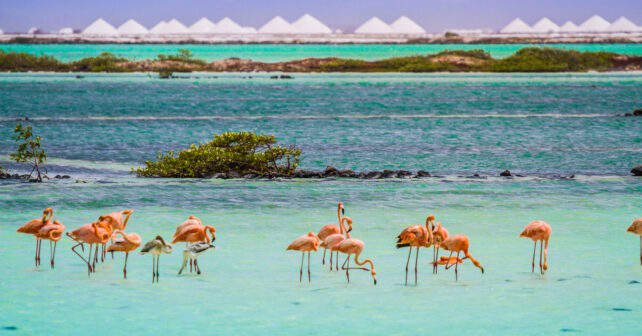
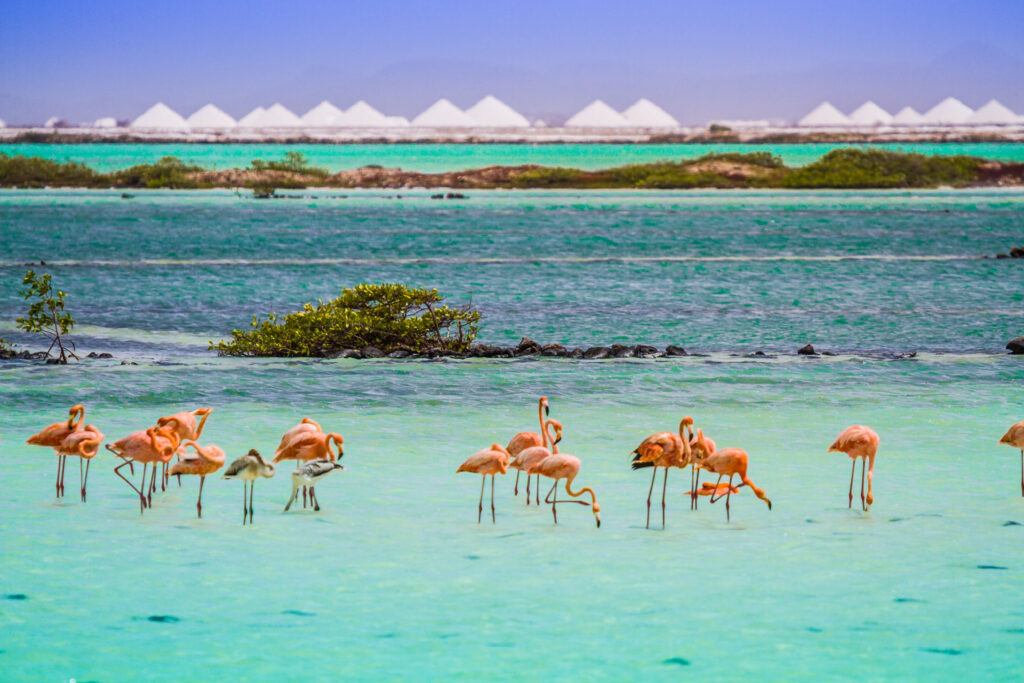
The world’s first Blue Destination and the ‘B’ in the Dutch Caribbean’s ABC islands, Bonaire is a diver’s paradise that offers much more than what’s beneath the sea. It’s an island with a thriving culinary scene, colorful architecture, abundant wildlife and natural history that makes this lesser known destination a must visit for the well-heeled traveler. It is home to several small villages with unique characteristics, as well as wildlife and natural wonders. As the appeal of this hidden gem continues to grow, it’s realized that there is more to this island than tropical sandy beaches and diving reefs.
Flamingo sanctuaries framed by salt pyramids, a commitment to sustaining ocean resources and a long list of inviting outdoor activities on land and sea, make Boanire a big travel must-see. Whether you enjoy immersing yourself in the local culture of the island, or seek endless water and outdoor adventures, discover why this hidden gem is on everyone’s travel bucket list.
HISTORY
Bonaire is part of the ABC Islands with its sister islands of Aruba and Curaçao, and is part of the Kingdom of the Netherlands. It’s located east of Curaçao and north of the Venezuela coast in the Lesser Antilles region of the Caribbean Sea. The Spaniards first took claim of the island in the 1400s. By the 1600s, the Dutch took possession of it, and Africans were brought to the island to work on the crops and salt pans. Over the years, several countries gained ownership of the island until it was repossessed by the Dutch and remains a Dutch island until today.
Despite its history, Bonaire has managed to establish its own unique culture and identity. The culture contains layers of Amerindian, Spanish, African, Dutch, and British influences. You’ll hear traces of the languages of all of the above during any given conversation in Papiamento, the creole language spoken. The diverse cultural history has influenced the language, music, traditions, festivals, and culinary heritage and colorful architecture among the locals.
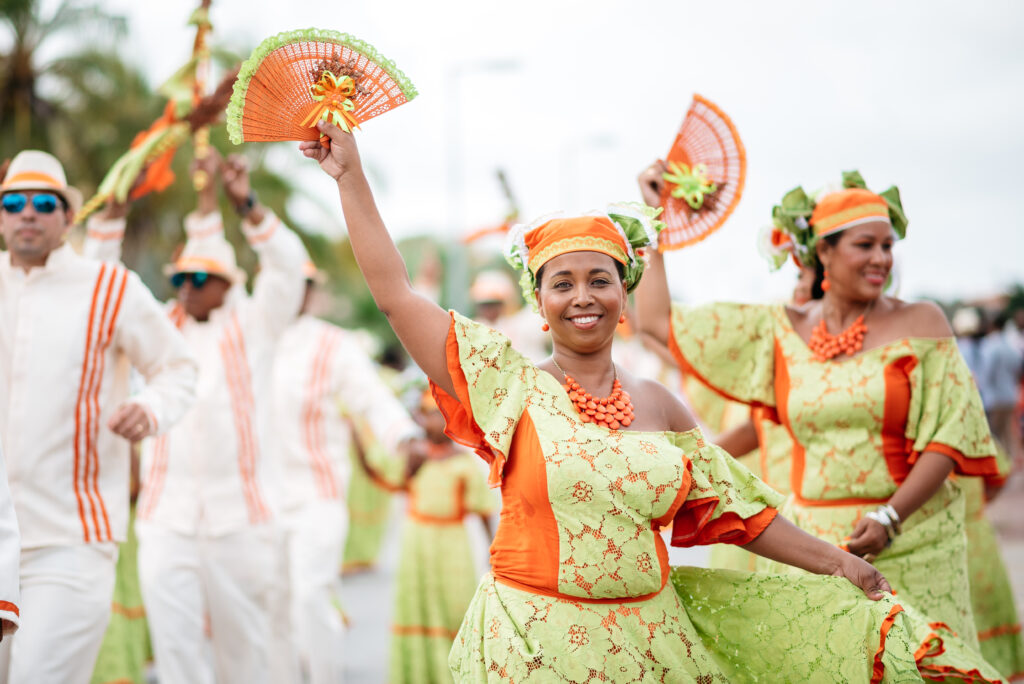
STAY
Harbour Village Beach Club
The Harbour Village Beach Club is tucked away in a private stretch of white sand beach lined with palm trees. The award-winning resort is set in a four-acre tropical escape and is a top destination for lodging because of its promise of serenity and relaxation. The resort offers guests spacious rooms available in two- or three-bedroom layouts, giving flexibility to match guests needs and budget. The rooms and suites offer spectacular views of the gorgeous beachfront or the lush garden courtyards – either way, these are views worth waking up to! Other room features include a private balcony furnished with lounge chairs and a hammock, an expansive living area, a luxurious bathroom with a marble shower, and more.
The resort also has its restaurant, La Balandra Restaurant & Bar featuring ocean-inspired décor with a creative menu that will excite your palate. Enjoy breathtaking views of the ocean from the restaurant with dishes focused on in-season ingredients to ensure you can indulge in the freshest dishes throughout your meal.
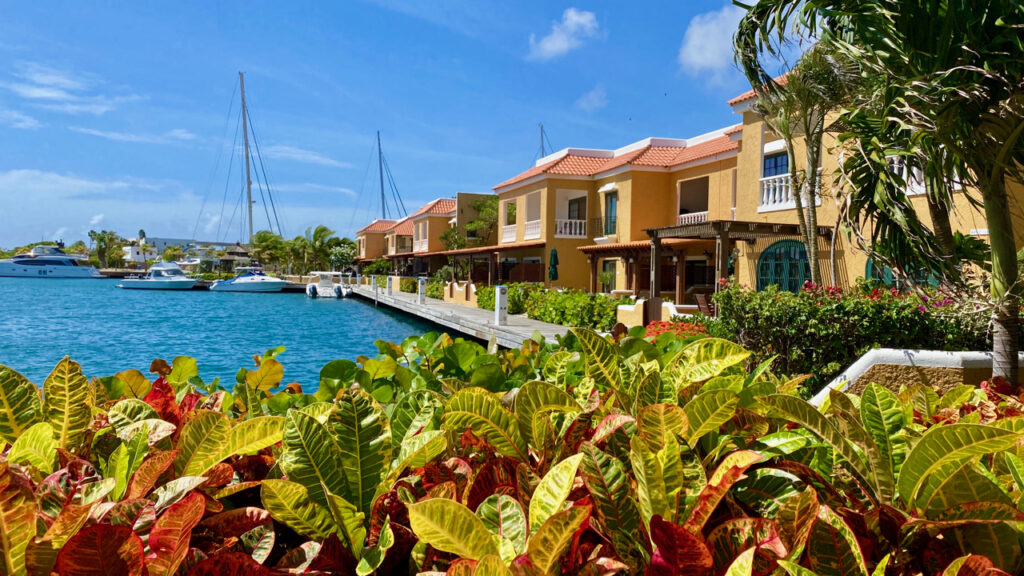
SEE
Coral Reef Diving & Snorkeling
No trip to Bonaire is complete without checking out its more than 85+ diving sites. Bonaire is the top shore diving destination in the Caribbean with an abundance of diving sites accessible just a few feet from the coastline. The marine life on the island is also impressive with a pristine reef environment that is home to the world’s most extensive collection of fish species. There are 350 known species of fish and over 57 coral species in the waters of Bonaire including tropical fishes, seahorses, rays, and spot turtles. However, you don’t have to dive to enjoy the underwater world of Bonaire, as snorkeling also allows visitors to get a broader view of the reef and it’s mini inhabitants. Due to the significance of these reef, Bonaire’s has made it their mission to ensure the conservation of these sites and its commitment to nature conservancy.
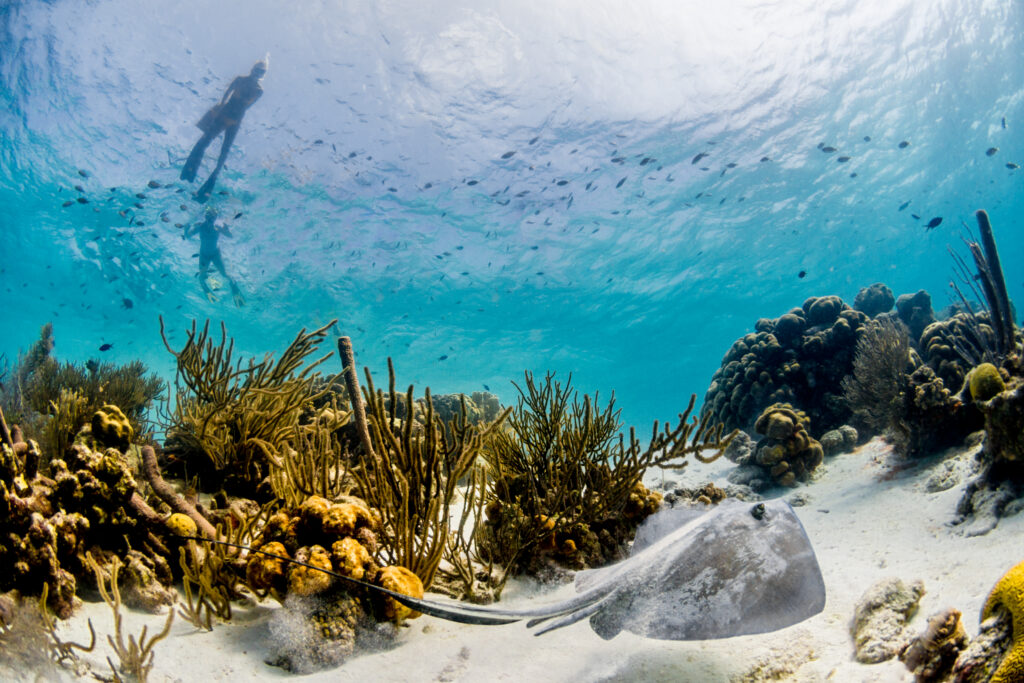
Washington Slagbaai National Park
The Washington Slagbaai National Park is a national park and ecological reserve in Bonaire. It is notable for its impressive natural formations, including rock formations, caves, beaches, bays, and blowholes. It is located in the northern part of Bonaire and spans a total land area of 14,000 acres. Washington Slagbaai National Park makes up almost 20% of the entire island. There are plenty of activities to do in the park and is that it is a birdwatcher’s paradise. There are over 200 bird species that you can spot in the area including salt lakes, famous for the large colony of flamingos that breed there. Aside from the beaches and ample diving spots, you can also explore several hiking trails in this park and eco-reserve. Your efforts will be rewarded with some of the best views of north Bonaire.
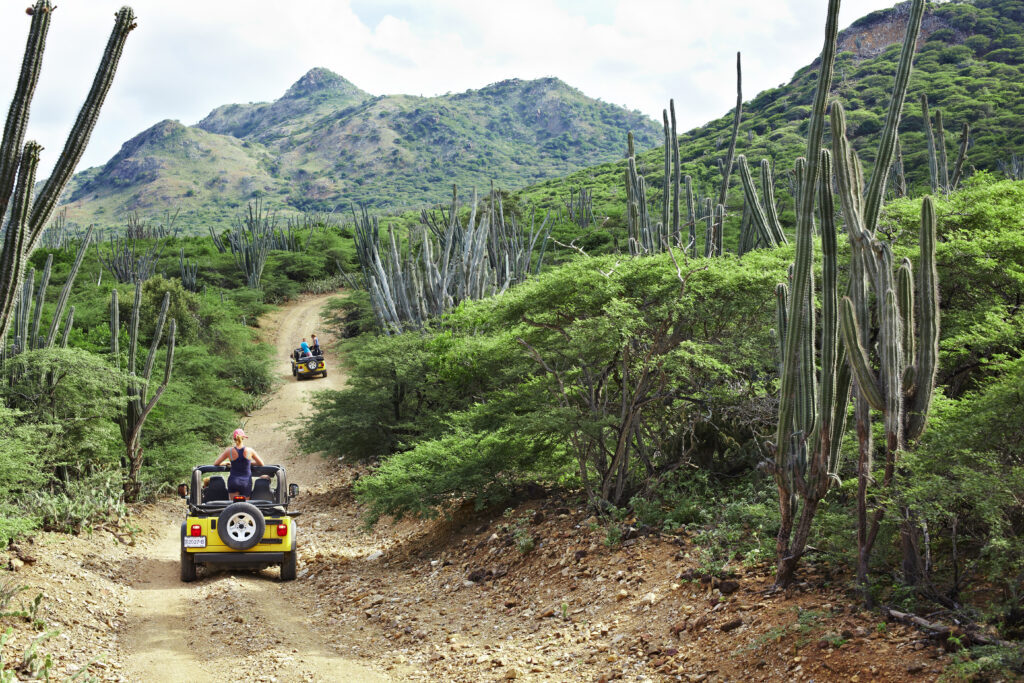
Salt Pans
During the early history of Bonaire, salt as a commodity was the root of war and struggles amid European factions, however the Salt Pans of Bonaire are among the curious attractions for tourists looking to explore a different side of the colorful and culturally-diverse island. These salt pyramids are easily visible when you arrive by air or sea as the pyramids rise 50 feet high. Each pyramid consists of up to 10,000 metric tons of salt. Aside from the salt pyramids, the Flamingo Sanctuary is another distinctive sight you’ll see in the Bonaire salt flats.

Slave Huts
The Slave Huts of Bonaire is one of the unique sights that provide a glimpse into the darker side of the island’s history of slavery. These huts were constructed in 1850 during the slavery, and served as camping facilities for slaves working in the salt ponds to collect and ship the salt, one of Bonaire’s most important export product. The huts reflect the inhumane conditions these slaves lived in while employed in salt facilities and nearby plantations. The Netherlands National Antilles Foundation recently restored these huts and provides information on-site for visitors to know a brief history of the area. These huts are a grim reminder of Bonaire’s repressive past.
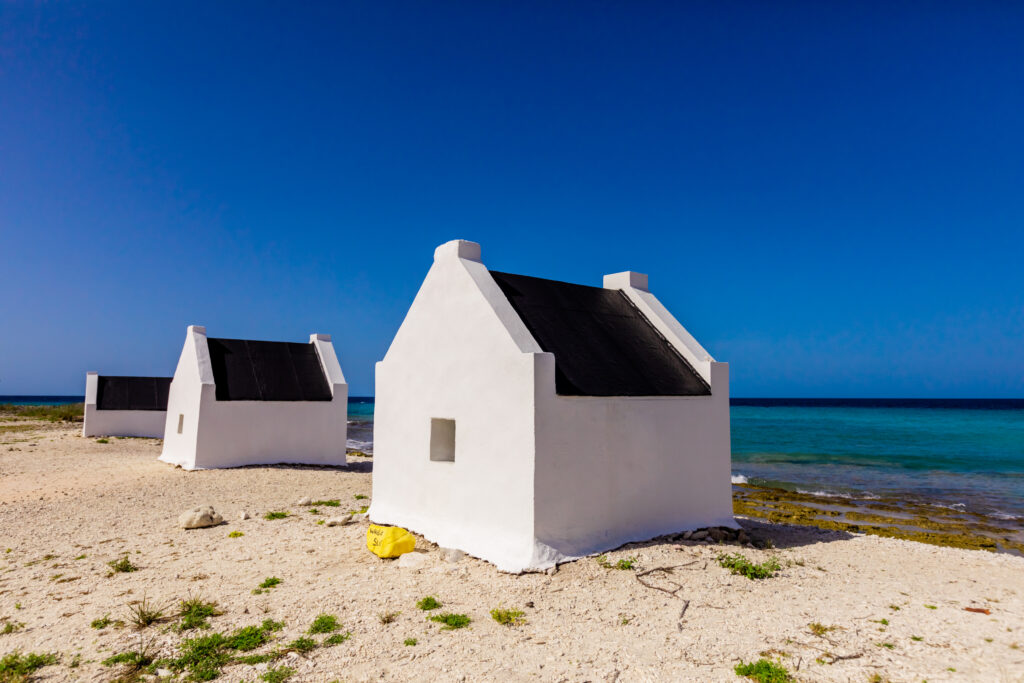
CAVES
The abundance of cave formations in Bonaire attests to its rich natural diversity. There are over 400 caves that make up the extensive cave system and Bonaire has worked to preserve these cave systems as they play a vital role in the island’s natural ecosystem. Although some caves are easy to access, while others are concealed beneath the waters, there are guided tours available to witness the ancient stalactites and stalagmite formations within these caves. Certified cave guides can take you into secluded caverns where you can snorkel in the dark in crystal clear water. Be prepared to embark on a journey of escaping into a world of the natural subterranean system.

PLAY
Landsailing
Watersports enthusiasts will find lots to do along the beautiful coastline. Above the surface, visitors can take their pick of watersports, including world-class windsurfing, kitesurfing, and kayaking the island’s mangrove system. Landsailing is one of the most sought-after activities for visitors to Bonaire, especially those looking for unique activities along the coastline. It’s a perfect activity if you want to experience the thrill while aiding in the sustainability efforts of Bonaire.

Donkey Sanctuary
The Donkey Sanctuary Bonaire is an organization established to protect the donkeys of Bonaire. Guests can interact with the rescued donkeys and discover the current efforts to rehabilitate, protect, and provide shelter for the donkeys on the farm during the tour. The Donkeys are provided with food, drinking water, medical care and have plenty of room and freedom. The Donkey Sanctuary Bonaire was established in 1993 and is currently home to more than 700 donkeys.

TASTE
One of the most exciting aspects of the cultural diversity of Bonaire is that the influences are also reflected in its local culinary heritage. Bonaire is home to countless ethnicities for centuries, therefore the cuisine of Bonaire draws from various influences, including the Dutch, French, British, Italian, German, Chinese, Indonesian, and Caribbean cuisines. When you visit Bonaire, expect an explosion of international flavors waiting to treat your palate to some of the best dishes you could taste. Since it is a tropical island, you can also indulge in the freshness of its ingredients, many of which are caught or harvested on the same day they are cooked. The restaurants specialize in international and local cuisines, but your visit to Bonaire wouldn’t be complete without tasting its local dishes, such as goat stew and iguana soup.
For a gourmet dining experience, try Supper at Sea with Melisa Sailing. This famous luxury supper at sea tour lets you enjoy a 6-course dinner and drinks while going on a relaxing evening cruise. Tiki & Co is another must-try culinary experience in Bonaire. This new tropical and exotic cocktail bar is located near Kralendijk by Sir Eddy Trenidad. It is a Tiki-inspired bar serving the best cocktails and bar food on the island.
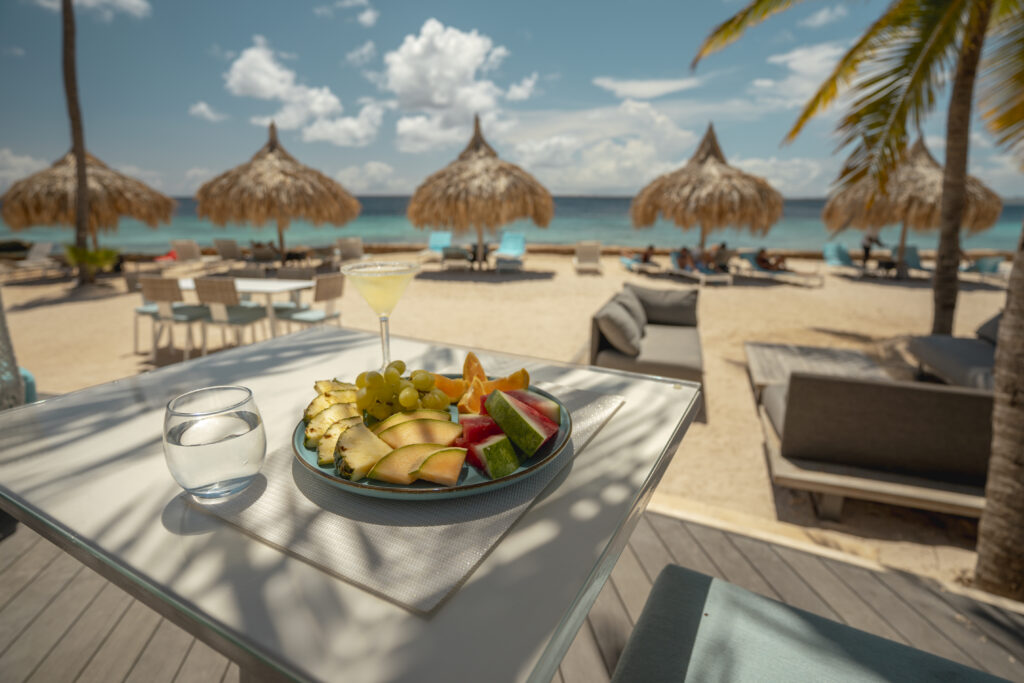
SHOPPING
The capital city, Kralendijk, is a beach town with Dutch Colonial buildings, a shopping boulevard and excellent restaurants. The lively town center is filled with colorful Caribbean architecture and many shopping destinations, especially if you explore the main street of Kaya Grandi. The famed shopping street in Bonaire is home to various restaurants and shops offering products like women’s clothing, jewelry, books, and other specialty or artisan crafts.
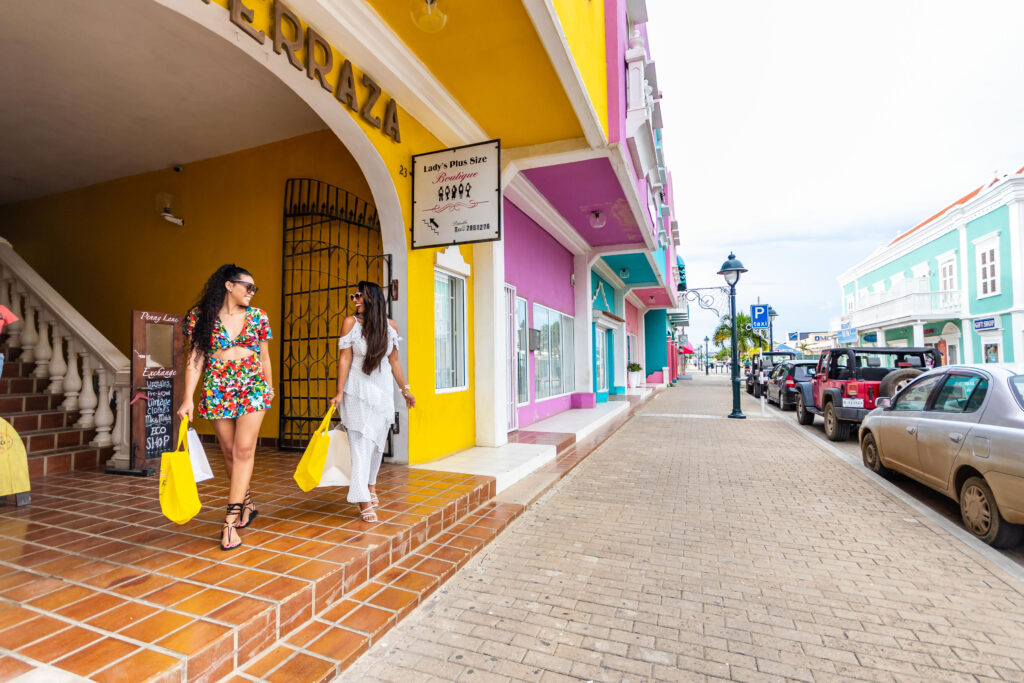
By Kinya Claiborne & Abigail Castro Sinsona, STYLE & SOCIETY
Photo Credit: Courtesy of Bonaire Tourism Board











